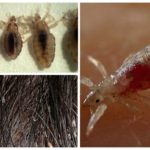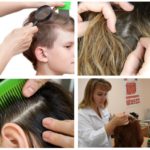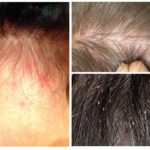Pediculosis at school - where to go and what to do
Content
- Lice and nits
- Inspection for the presence of lice
- Lice in children
- Lice prevention
What measures should be taken by parents and the administration when pediculosis appears in school - the question will interest all those who have encountered such a nuisance at least once in their life.
Appearance problem lice in childrenvisiting public places: kindergartens, schools, summer camps, is very acute, despite the fact that outside the 21st century, many parents think that lice - is a relic of past years or a problem of persons without a certain place of residence, i.e. homeless people. In reality, any person, regardless of lifestyle or living conditions, has a real possibility of lice infestation.
Most often that in class pediculosis and some students are infected, parents will find out from the class teacher or accidentally find insects from their child. In such a difficult situation, the question arises: what to do, namely, how to get the lice out and what will be the actions of the school administration, and also where to complain if no action is taken.
Where to go when detecting pediculosis in school
At the state level, there are rules adopted by the sanitary-epidemiological service (SES) in each city and which all administrative services of children's educational institutions must adhere to. They indicate that in any children's group, including and school, it is forbidden to accept children affected by head lice.
When, when examined, the health worker or teacher discovers lice, then the first step is to inform the parents of the infected pupil and implementrecommendations on how to treat a child from parasites and how many days he will not be able to attend school.
On a note!
Parents should independently for their own funds. remove lice from a child. A student may be admitted to classes only after visiting a doctor and receiving a certificate of permission to enter the school. This is done in order to protect other children from infestation.
The law establishes a specific procedure for pediculosis in school, which provides for the creation of sanitary and hygienic conditions to prevent the spread of parasites:
- regular examinations should be carried out by a nurse or teachers of all students, the data are recorded in head examination journal;
- not allow children with pediculosis, i.e. The answer to the question whether it is possible to go to school with lice is only negative;
- the ill students can start classes only by bringing a certificate from the doctor about the absence of lice and nits.
According to new SanPinthere are also preventive measures in school, legalized by the rules and regulations of the SES, which must be carried out in children's institutions: carrying out inspections on lice after each vacation and on a monthly basis selectively in some classes.Parents are often interested in the question: where to complain if there are lice in school. By law, parents are obliged to notify the school administration, which will solve this problem.
The nurse should inform the SES who will register this case. Then quarantine for pediculosis is conducted in the school, which usually includes an examination every 10 days during the month of all students.
On a note!
Only in cases of mass lice can the school be closed for strict quarantine, most often for a week. If the administration does not take measures to eliminate the outbreak of pediculosis, then a complaint can be filed with the SES or district education departments.
What happens in practice
In fact, the problem of lice entirely shifted to the shoulders of parents who should fight lice on their own. Finding directly from your child or learning from other parents that lice have appeared in school, each adult should first take steps to destroy them and try to protect their student from possible infection from other students in the classroom.
The sequence of actions for the destruction of pediculosis (a reminder for parents):
- buy at the pharmacy lice remover;
- process the head and hair of the child according to the instructions of this tool;
- wash your hair thoroughly with regular shampoo; boys can have a “zero” haircut in emergency situations;
- mechanically comb out dead insects and nitswhat is often used for special comb and vinegar solutionthen rinse hair with water;
- wash all personal items and bed linen of all family members;
- inspect others living in the house and, if they are found, carry out activities to remove lice;
- report the situation to the nurse at the school, after which the staff of the educational institution should conduct a complex of anti-pediculosis activities;
- conduct several inspections every week and, if found, repeat the processing of your child and the whole family until the complete destruction of insects and their eggs.
Preventive measures
Parents should know how to protect themselves against head lice in school and with what preventive measures:
- during the period of mass disease should be inspected the child’s head daily;
- girls who have long hair should be worn in a braid or a safer “bun”;
- brush your hair daily and wash your hair regularly;
- Do not allow your child to play with children who have some symptoms of head lice infection;
- you can protect yourself against lice and baby with essential oilsinsect repellent: ylang-ylang, tea tree and others prophylactic agents.
Important!
You should talk with the child and explain the importance of using only your own things and personal hygiene items in order to be protected from being hit by parasites.













